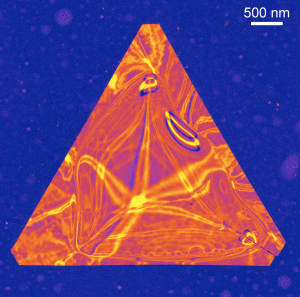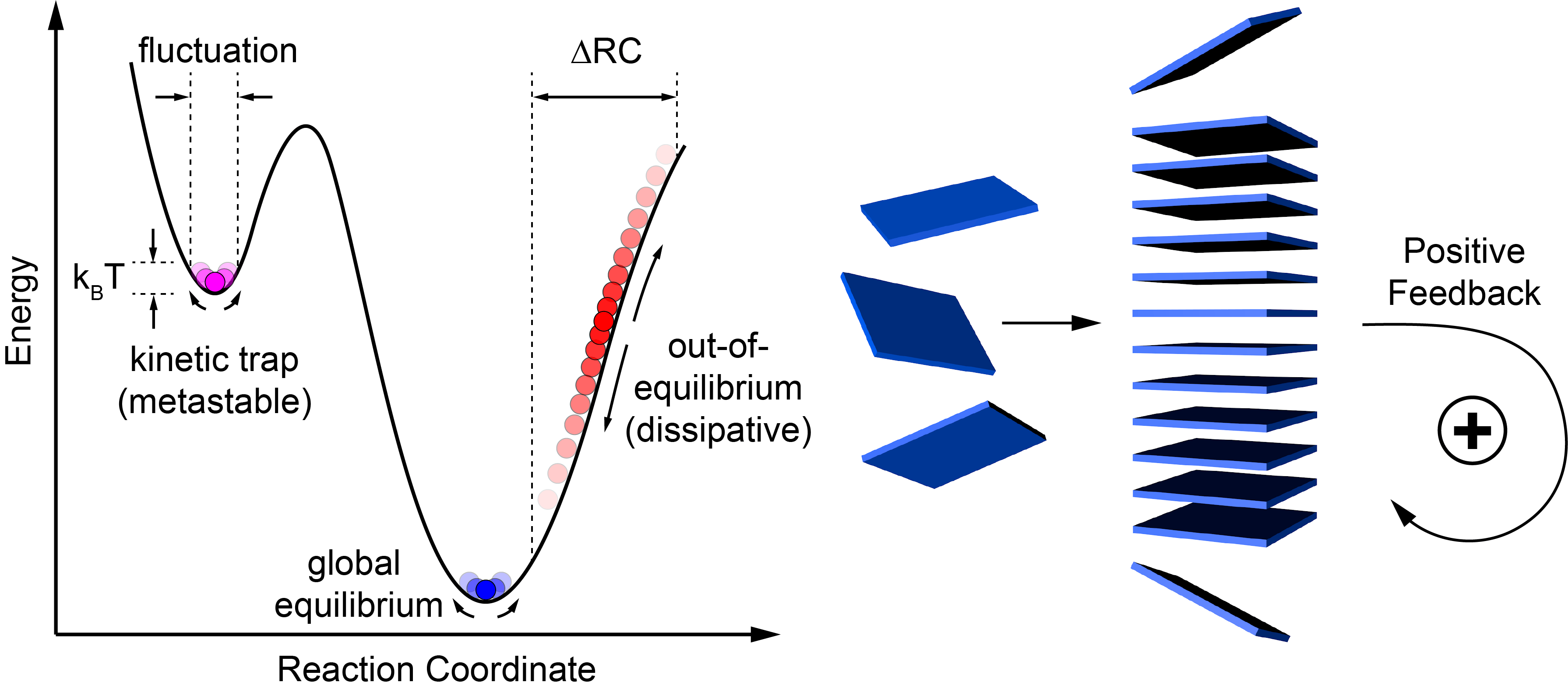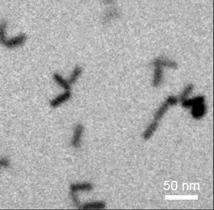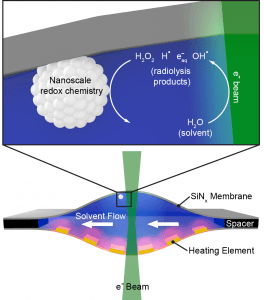Inorganic nanoparticles represent a unique chemical building block for the synthesis of novel materials because their properties are tunable based on the particle size, shape, surface chemistry, and local environment. The emergence of fundamentally new physical phenomena in nanoscale systems implies that extended structures built from these components will support novel collective properties that do not arise in materials predicated on atomic building blocks. A grand challenge in the field of nanoscience is to control the synthesis and assembly of inorganic nanomaterials with sufficient precision so as to allow for complete control over the phase and property space available to these emerging systems. Unfortunately, because of the difficulty in characterizing nanometer-scale systems with the necessary spatial, temporal, and compositional resolution, nanoscience has suffered from a pronounced lack of mechanistic understanding of all but the simplest of chemical processes. As a result, reaction conditions for the synthesis of a nanoparticle with a new shape or composition are determined almost entirely through tedious trial-and-error experimentation. This is in stark contrast to the vast knowledge of reaction mechanisms available to traditional molecular chemists that allow for the synthesis of virtually any molecule, regardless of complexity.
Constrained Nanoparticle Assembly
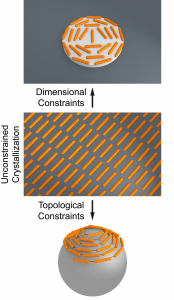 Because most nanoparticles are highly-symmetric objects (e.g. spheres, platonic solids), they tend to assemble into high-symmetry arrangements through simple attractive interactions. Thus, properties which require low-symmetry configurations are absent from most self-assembled nanoparticle systems. One way to overcome this limitation is by applying higher-order constraints to the system that “frustrate” crystallization. In these cases, the equilibrium “compromised” arrangement of particles is one which is well-defined but inherently low-symmetry. Here we investigate the connection between dimensional and topological constraints with the symmetry of self-assembled nanomaterials. The plasmonic and optical consequences of these asymmetric configurations is of particular interest for metamaterial applications.
Because most nanoparticles are highly-symmetric objects (e.g. spheres, platonic solids), they tend to assemble into high-symmetry arrangements through simple attractive interactions. Thus, properties which require low-symmetry configurations are absent from most self-assembled nanoparticle systems. One way to overcome this limitation is by applying higher-order constraints to the system that “frustrate” crystallization. In these cases, the equilibrium “compromised” arrangement of particles is one which is well-defined but inherently low-symmetry. Here we investigate the connection between dimensional and topological constraints with the symmetry of self-assembled nanomaterials. The plasmonic and optical consequences of these asymmetric configurations is of particular interest for metamaterial applications.
Emergent Colloidal Nanosystems
Using nanoparticles as building blocks, researchers have constructed extremely sophisticated materials via self-assembly but ones that are mostly static over time. Biological systems, on the other hand, are assembled using the same set of fundamental forces (electrostatics, hydrogen bonding, Van der Waals interactions), but exhibit strikingly sophisticated behavior including adaptability, directed motion, and self-regulation. In this research thrust, we strive to replicate these properties in non-living systems by synthesizing particle building blocks that exhibit emergent assembly behavior – collective effects that are more than a simple linear sum of the individual components. This requires the integration of feedback mechanisms in particle-particle interactions driven by external sources of energy or controlled by cooperative supramolecular ligand binding. From these components we design networks of interacting nanomaterials whose structure and properties can respond to external stimuli and evolve intelligently over time.
In-situ Nanoscale Dynamics
New insights into the properties of matter often arise because of advances in the tools of characterization. For nanoscale systems, techniques are needed that allow one to monitor the evolution of structure in response to specific stimuli over time. Liquid-cell transmission electron microscopy represents a promising technique for addressing these challenges as it combines the high spatial and temporal resolution of TEM with the ability to monitor particle interactions occurring in a solution environment. In this work, we use liquid cell TEM to quantify fundamental dynamic properties of nanoscale systems both near and far from equilibrium. In addition to understanding the kinetic mechanisms of self-organizing systems, we are interested in visualizing single-molecule surface chemistry to address fundamental questions in nanocrystal synthesis, catalysis, and protein biofouling.
Dynamic Optical Films
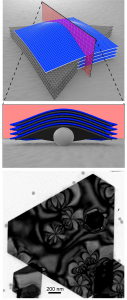 Although lithographic tools allow patterning of arbitrary 2D structures, these materials are largely static after being synthesized, resulting in a single set of properties. Nanoparticles and self-assembled systems, on the other hand, often possess structures that are defined by relatively weak intermolecular forces and thus can be more easily modulated post-synthetically to dynamically alter properties. This research thrust aims to assemble nanoparticle-based films that exhibit optical properties which can be continuously tuned through mechanical deformation or by changing particle configurations. Fundamentally this work requires new understanding of mechanical forces and particle reorganization at small length scales but also potentially opens up new avenues for fabricating optical films and metamaterials with tunable properties.
Although lithographic tools allow patterning of arbitrary 2D structures, these materials are largely static after being synthesized, resulting in a single set of properties. Nanoparticles and self-assembled systems, on the other hand, often possess structures that are defined by relatively weak intermolecular forces and thus can be more easily modulated post-synthetically to dynamically alter properties. This research thrust aims to assemble nanoparticle-based films that exhibit optical properties which can be continuously tuned through mechanical deformation or by changing particle configurations. Fundamentally this work requires new understanding of mechanical forces and particle reorganization at small length scales but also potentially opens up new avenues for fabricating optical films and metamaterials with tunable properties.
